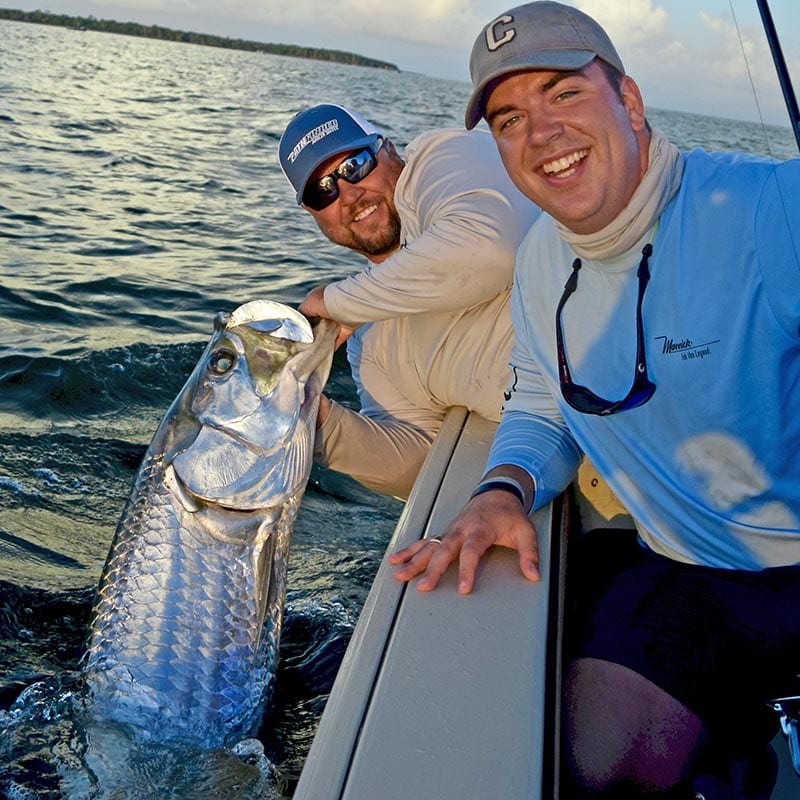Boca Grande Tarpon Fishing FAQ’s
When is the best time to fish for tarpon in Boca Grande?
The yearly tarpon migration into Boca Grande generally begins in April and lasts through August.
Why is Boca Grande considered the Tarpon Capital of the World?
During this yearly migration, Boca Grande is home to the single largest tarpon population on the planet.
Where exactly are the tarpon when they reach Boca Grande?
The tarpon congregate in the Boca Grande Pass.
I hear Boca Grande Pass gets crowded, is there an alternative that is just as good?
Yes, Charlotte Harbor (which neighbors Boca Grande) is a great alternative. If you need help deciding, it is best to consult with your captain.
How deep is Boca Grande Pass?
It has depths of about 70ft.
Do tarpon have predators?
Yes. The main predators for tarpon in Boca Grande Pass are sharks. Most commonly, bull sharks and hammerhead sharks.
What kind of bait is good for catching tarpon in Boca Grande Pass?
Many different styles of baits will work. Live bait in the form of small crabs and live bait fish are popular, but tarpon will also go after an assortment of artificial baits as well. Fly fisherman also have great success with tarpon here.
What days of the week are best for Boca Grande tarpon fishing?
For the most enjoyment, weekdays are usually preferred over weekends. This is simply due to the amount of boats on the water – weekends see heavy traffic. On Sunday’s specifically, the Professional Tarpon Tournament Series is usually fished, combined with weekend recreational tarpon fisherman – this is generally the single most congested day in the pass.
Is tarpon fishing safe for a family?
Yes. Families take these trips all the time. Though large tarpon may seem like a lot to handle, families (and their members of all ages) have a great time. The captain here at Silver Lining Charters also makes it a safe time.
Can we keep the tarpon we catch?
No. Tarpon are a protected species in the state of Florida that are catch and release only. The only exception for the harvest or possession of a single tarpon is when in pursuit of an IGFA record and in conjunction with a tarpon tag.
Can we take a picture with a tarpon out of the water?
Again, the answer is generally no. FWC biologists have deemed that due to their size and weight, when these fish are pulled out of the water that their survival rate is extremely lowered when released. The only exception here, is a temporary lift from the water for a photo is allowed if the tarpon is under 40 inches. All other tarpon (40+ inches) must remain in the water.


















